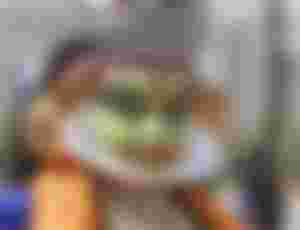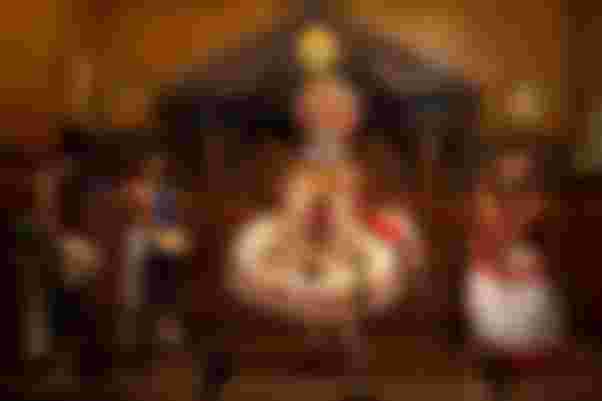Indian dance consists of many types of dances, which are generally classified as classical or folk dances. Like other aspects of Indian culture, different types of Indian dance have emerged, developed according to local traditions and assimilated elements from other parts of the country. And Kathakali is an excellent example of Indian classical dance. It is a Hindu exhibition art in Malayalam speaking Kerala, India. We are all quite familiar with Kathakali dance. My topic today is the history and tradition of this Kathakali dance
Kathakali dance is a kind of storytelling, where traditionally actors-dancers wear different colors, costumes and masks. The traditional content of Kathakali is folk-mythology, religious legends and spiritual concepts in Hindu epics and Puranas. Songs accompanied by dance are sung in Sanskrit Malayalam. In the modern style, women artists have also been included in the Indian storytelling team.

History:
The word 'katha' means 'story' and the word 'kali' means 'acting'. Overall, the word 'Kathakali' literally means 'acting' or 'drama'. This dance originated in the seventeenth century. The then king of Kottarakk in Kerala, Kerala Burma, invited Chamuriraj Manved Raj, the founder of the dance 'Krishnanatyam', a popular dance in the kingdom of Kasaria Chamuri. But Chamuriraj Kerala refused the invitation of Burma as there were no people in the whole of South India to understand his dance. Insulted by this, Kerala Burma itself introduced a dance called 'Ramaatyam'. The main content of 'Ramaatyam' written about the character of Sri Ramachandra was taken from Ramayana, Shiva Purana, Bhagavata etc.
King Kerala Burma is said to be the originator of 'Kathakali dance'. Reigning from 1575 to 1650, this king was a staunch patron of Kathakali dance. His later kings further improved and refined this dance. Over time, 'Ramaatyam' became famous and developed in the form of Kathakali.
This dance is actually a kind of dumb performance. Not all dancers sing or speak. Here the story is told only by connecting bells and claps with the song on the stage. There are 64 types of hand gestures in Kathakali dance. The rapid movement of the eyelids and eyebrows in this dance is very subtle and meaningful. Red, green, yellow, orange and purple costumes are more prevalent in the decoration of this dance. Here different classes of dancers use different types of makeup. However, the decoration of the female character is relatively simpler than the male character. In the past, men used to play both female and male characters. Because the costumes and techniques used for this dance were not very convenient for women. Even today very few women participate in this dance.

A man in a dance costume

A woman in a dance costume
Tradition:
Although there is disagreement about the origin of Kathakali dance, it has been popular for more than five hundred years. And most of them were written before the twentieth century. In the late seventeenth century, Unnayi Varia wrote four plays in his short life, which are still considered to be the greatest works in the history of Kathakali dance. These four plays written by Unnayi are served in four nights. The story of these plays is mainly based on the love story of Nol and Damayanti. We also find Nol and Damayanti in the Mahabharata, but the Kathakali dance has given a different form to their love, passion and affection.
The practice of Kathakali dance is divided into two parts, which are interrelated - the third male 'Shlok' and the first male 'Padam'. 'Shlok' describes the sequence of events of the scene. The verses are written in Sanskrit. On the other hand, the dialogues are written in Malayalam, which is called 'Padam'. This step is again divided into three parts -
Pallavi
Unruly and
Charanam.
These verses are based on the raga of ancient Indian music. In the background of that rage there is a variety of Sanskrit characters, blossoming content and mood of events. One such Sanskrit book is Natyashastra. The history of each drama shows that the same 'Padam' was performed twice by the same actor. The singers would repeat the same line, with which the dancing actors had to keep pace.

Perform dance on stage

Thanks
If you like it Upvote Can give.





great article dear